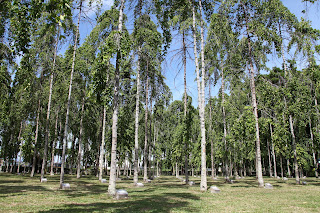We began our return trip this morning at 11 a.m, flying out of Honiara, and arriving in the Fiji airport, soon to board the plane for LAX. We'll arrive at Springfield airport today at around 11 p.m. It has been a wonderful trip and each one of us students has greatly enjoyed the time we have spent with our veterans. The stories we have heard and the lessons we have learned will follow us for the rest of our lives, and we will always remember this trip.
Each one of us is here because of the generosity of someone else, and we would like to give thanks to several people who made this trip possible.
First, we would like to thank the generous donors who backed this trip financially because they believe that we students will benefit from the valuable time we have spent with our veterans. This has been a fantastic opportunity to understand what the men in the United States military went through during the war, and our veterans have taught us so much about joy and perseverance.
College of the Ozarks made this fantastic trip a reality, and we would like the college to know that we are entirely grateful. These brave men have made the history of the Battle for Guadalcanal come alive for us students.The great sacrifice the military made in the defense of democracy and liberty is now very real and personal to each of us. We have loved the time we have spent with our veterans, and it has been extremely educational.
Lastly, and most importantly, we would like to thank our veterans for their service to our nation and for the time they have devoted to us students over the past nine days. The sacrifice they, and many others, made 70 years ago has afforded us the benefits of liberty and democracy. Without their service to our nation, the world, and future generations, life today would be vastly different. Over the past nine days we have learned so much about patriotism and love for one's country. Seventy years ago, these men made the great decision to serve their country, and even today, their selfless choice continues to impact the world.
None of the students on this trip will return the same; we all have changed and gained a new perspective on the service of our nation's military during World War II. Not only have we gained a new perspective, but we now have a new responsibility. The stories that our veterans have shared with us first-hand are now ours to tell to those who have not had the privilege we have had. This responsibility is one that we do not take lightly. When we get home, we must pass on the stories that we have heard, so that the valuable legacy these men have built will not be forgotten as time passes. These veterans truly are the greatest generation, and we intend to be the generation that keeps their legacy alive forever.























































